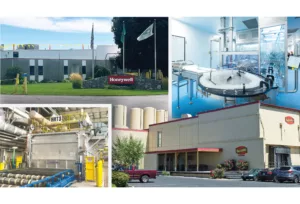Low vacancy rates drive up rents
Rising prices put majority of tenants in 'cost-burdened' category

While hundreds of new apartment units are planned and under construction here, the apartment vacancy rate remains low, and more than half of Spokane-area renters pay more than 30 percent of their income on rent.
U.S. Census Bureau numbers show 52.2 percent of Spokane-area renters spent more than 30 percent of their income on rent in 2015, putting them in the “cost-burdened” category for housing.
That rate has been hovering at or above 50 percent for more than a decade, peaking in recent years at 54.3 percent in 2011.
The cost-burden rate has been consistently heavy for most renters here, says Patrick Jones, executive director of Eastern Washington University’s Institute for Public Policy and Economic Analysis.
“They’ve been in a situation of stress for some time,” Jones says.
By comparison, the statewide cost-burden rate in 2015 was 48 percent, and the U.S. rate was 49.8 percent, data compiled by the institute-led Spokane Community Indicators Initiative show.
Due to current low apartment vacancy rates, the percentage of cost-burdened renters might not let up soon, he says.
As of fall 2016, the apartment vacancy rate in Spokane County was 1.6 percent, down from 3.3 percent a year earlier and from 4.3 percent five years ago, according to apartment-market surveys conducted twice annually by the Runstad Center for Real Estate Studies, at the University of Washington.
Jones says a 5 percent apartment vacancy rate is considered a balance of supply and demand.
The five-year trend in Spokane County shows average apartment rents have increased more than 25 percent to $853 last fall from $679 in the fall of 2012 in Spokane County, according to Runstad Center surveys. Meantime, data compiled by Spokane Community Indicators shows household income has remained stagnant in the county in recent years, meaning rent has been taking larger and larger bites out of income.
“If units are going up and vacancy rates are still declining, the demand pressure is greater than the supply increase,” Jones says.
Dave Scott, director of rental assistance for the Spokane Housing Authority, says low vacancy rates drive up rents and limit where people who rely on rental assistance can live.
For example, the Spokane Housing Authority can provide up to $620 a month for a one-bedroom apartment unit for a qualifying person with no income. That wouldn’t pay the rent for most units throughout the Spokane area.
“We like to try to expand housing opportunities and get people out of high-poverty areas and into lower poverty areas,” Scott says.
But higher average rents force some people into high-poverty areas where rents are low enough to be covered by vouchers, he says.
“That creates more of a concentration of poverty,” Scott says.
Residents in high-poverty areas tend to have fewer opportunities for education, transportation, health care, and even grocery purchases, he says.
Scott says future relief from rising rental rates likely will be based on the sheer number of rental units available as new projects come on line.
“More apartment construction will increase vacancy, and that’s what tends to allow people to spread out,” Scott says.
Catholic Charities and its housing partners have multiple developments planned and under way that will provide nearly 500 low-income apartments in the Spokane area.
Several market-rate apartment projects, including the 184-unit Granite Pointe III complex in Spokane Valley, and the 221-unit second phase of the Blue Point Apartments complex in Wandermere, also are in the works.
Scott adds, however, he’s not certain whether it’s feasible for market-rate apartment developers to construct new projects with rents that fall below the 30 percent of household income threshold for most renters.
“Typically, tax credits and bonds help drive affordable housing,” he says.
In neighboring North Idaho, Kootenai County also has had a chronic shortage of rental units, coupled with rising rental rates.
Beginning in 2014, the Runstad Center also has been compiling apartment market data for Kootenai County.
The fall survey shows average monthly apartment rent in Kootenai County rose to $773 as of last September, compared with average rent of $660 in September 2014. During the same period, the vacancy rate fell to 0.5 percent from 1.8 percent.
Ben Widmyer, owner of Widmyer Corp., a Coeur d’Alene-based property-management company, says construction costs and land prices make it difficult for affordable housing projects to pencil out without tax incentives or other subsidies.
“I think that’s what tax credits are doing,” he says, adding that projects receiving tax credits also are subject to rent limits, he says.
Still, Widmyer says higher market-rate rents are putting some pressure on lower-income renters.
“We haven’t seen wages increase locally,” he says. “But I wouldn’t say rates at the lower end have drastically put those people at risk.”
Average rent prices likely will climb due to two upscale apartment projects planned in Coeur d’Alene, including the 47-unit Lake Apartments project planned on the east end of downtown, Widmyer says.
Developers “are starting to build more higher-end rental units,” he says.
The Spokane rental cost-burden rate contrasts with the housing affordability index, which is applied to the homebuyer market.
For Spokane County, the fall housing affordability index rating of 173 was one of the best in the state and has remained stable in recent years, according to Runstad Center housing market reports.
An index rating over 100 indicates a family with a median household income can purchase a median-priced home. The index assumes the homebuyer would qualify for a typical 30-year mortgage with a 20 percent down payment and mortgage payments within 25 percent of household income.
The statewide housing affordability index for the third quarter of 2016 was 126.9, with King County having among the lowest affordability ratings, at 93.4.
Jones says homebuyer affordability might belie a growing income disparity between renters and homebuyers, as rising home prices make it even more difficult for cost-burdened rental households to save up for down payments for single-family homes.
Related Articles


_c.webp?t=1763626051)

_web.webp?t=1764835652)